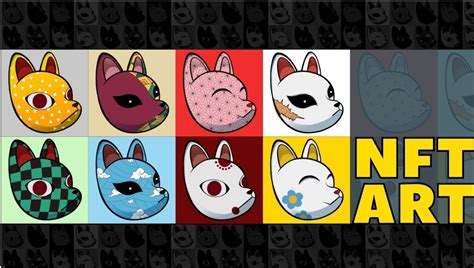Creating Unique NFT Art with Generative Algorithms
In the world of digital art, Non-Fungible Tokens (NFTs) have become increasingly popular as a means to showcase unique and one-of-a-kind creations. One of the most exciting aspects of creating NFT art is the potential for it to be truly original and personalized. But how can artists harness the power of generative algorithms to create truly unique pieces?
What are Generative Algorithms?
Generative algorithms, also known as machine learning models, use mathematical equations and computational processes to generate new data that resembles existing patterns or structures. These algorithms can be used for a wide range of tasks, from generating artwork to music compositions. In the context of NFT art, generative algorithms allow artists to create unique pieces that are not only visually striking but also imbued with a sense of randomness and unpredictability.
The Basics of Generative Algorithms
To get started with creating NFT art using generative algorithms, it’s essential to understand how these algorithms work. Here are some key concepts:
- Data Preparation: Artists need to prepare their data by defining the parameters for the algorithm to generate output. This typically involves specifying the desired shape, size, and color palette of the artwork.
- Training the Model: The artist then trains the generative model on a dataset that resembles the type of art they want to create. In NFT art, this might involve collecting images or samples from various sources.
- Generating Artwork: Once the model is trained, it can be used to generate new artwork by feeding in random parameters and adjusting them iteratively until the desired outcome is achieved.
Popular Generative Algorithms for NFT Art
There are several generative algorithms that artists can use to create unique NFT art, including:
- Generative Adversarial Networks (GANs): GANs consist of two neural networks that work together to generate new data. Artists can train a GAN on a dataset and then feed in random parameters to generate new artwork.
- Variational Autoencoders (VAEs): VAEs are neural networks that learn to compress complex data into compact representations, allowing them to generate new data. In NFT art, this can be used to create unique images or patterns.
- Neural Style Transfer: This algorithm allows artists to transfer the style of one image to another. It’s a powerful tool for creating unique and interesting artworks.
Tips for Creating Unique NFT Art
While generative algorithms are incredibly powerful tools, they require some trial and error to master. Here are some tips for creating unique NFT art:
- Start with a clear concept: Before training the model, define your idea or theme for the artwork.
- Experiment with different parameters: Iteratively adjust the model’s parameters to explore different styles and outputs.
- Keep it simple: Don’t overcomplicate the algorithm; focus on creating unique and interesting art rather than trying to achieve perfection.
Benefits of Using Generative Algorithms in NFT Art
Using generative algorithms in NFT art offers several benefits, including:
- Increased creativity: Generative models allow artists to explore new ideas and styles that might not have been possible using traditional methods.
- Unique pieces: The unpredictable nature of the algorithm ensures that each piece of artwork is one-of-a-kind.
- Economic potential: NFT art created using generative algorithms can be sold for a significant price, making it an attractive investment opportunity.
Conclusion

Creating unique NFT art with generative algorithms requires some technical knowledge and experimentation, but the rewards are well worth the effort.
